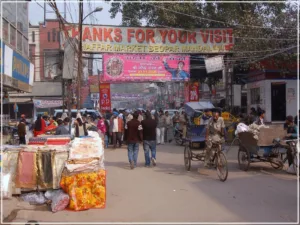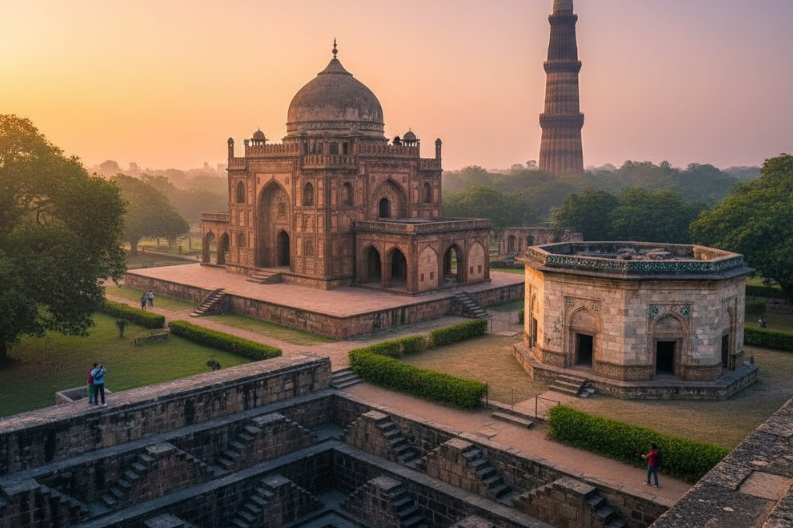Are you looking for an unforgettable experience that highlights the vibrant culture of India? Then look no further than a visit to the Karol Bagh Market in Delhi!
From colorful sari shops to delicious street snacks, there’s something for everyone in this bustling marketplace. Explore winding alleyways and find yourself lost in a maze of lively locals buying and selling its wares.
Whether you’re searching for authentic spices or beautifully embroidered fabrics, the Karol Bagh market offers endless opportunities to be amazed by Indian culture.
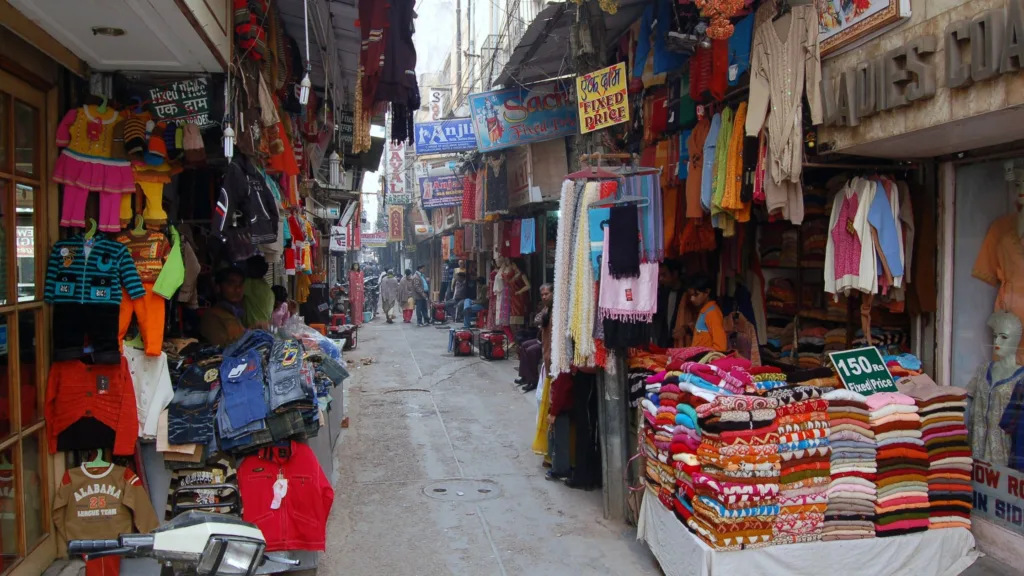
Best experienced over several days while taking it all in stride, visiting this remarkable market is sure to be an adventure like no other. If you’re looking for a unique shopping experience that offers everything from clothes to jewelry to home decor, This market in Delhi is a one-stop destination for everyone, just like Janpath Market in Delhi.
There are multiple markets inside the Karol Bagh Market area, named Gaffar Market, Chand Chowk Sadar Bazaar, Ajmal Khan Road Market, and many more. Here, you can find everything from clothes to decor items or other household amenities.
This market is the perfect place to explore India’s rich culture and heritage while picking up some amazing bargains. Let’s take a closer look at what makes Karol Bagh such an exciting destination.
The History Behind Karol Bagh Market
Karol Bagh Market in Delhi has a deep history that stretches back to the 19th century. Once known as the ‘Cheap Bazaar,’ it has grown from a small agrarian market to one of Delhi’s most iconic shopping venues.
Some say that it was established by freedom fighters who wanted to create a safe haven for those looking for essential goods at bargain prices. The market is now home to thousands of traders dealing in textiles, jewelry, footwear, and electronic accessories.
While it is also said that Karol Bagh has been a major shopping hub since the 1930s when it was founded by an immigrant from Afghanistan named Haji Karimuddin.
He set up his first shop here, selling clothes and fabric, setting the stage for what would become one of India’s most famous markets. Since then, the area has grown exponentially and now includes over 5,000 shops spread across four streets.
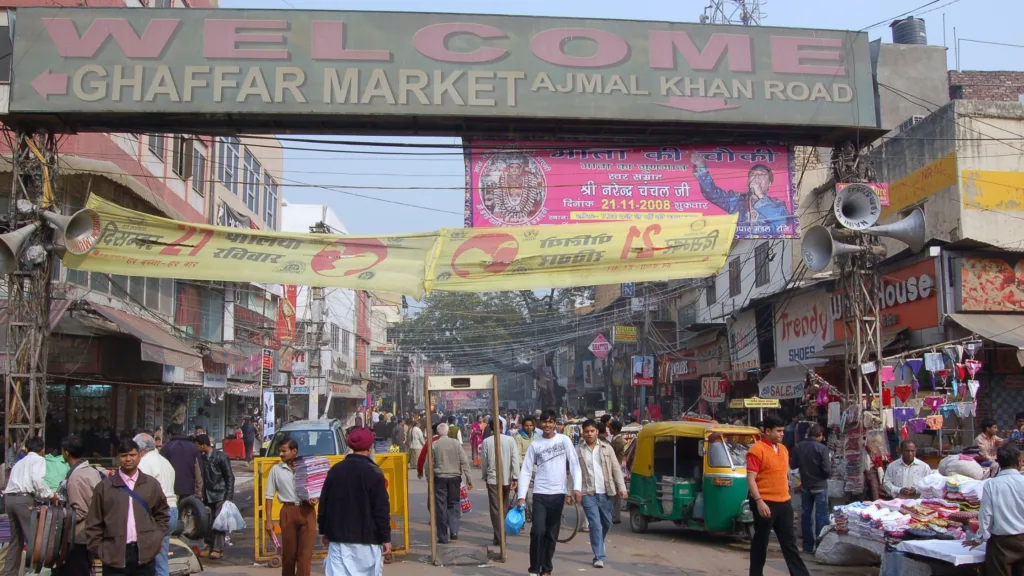
Although the market has evolved over the years, there are certain customs and traditions that remain unchanged. Shoppers can still haggle with vendors, delight in delicious street foods, and make sure they don’t miss out on any great deals.
Karol Bagh Market, Delhi, India, is a vibrant and bustling shopping bazaar that has captivated bargain-savvy shoppers for centuries. As time passed and generations of shopkeepers took over the family businesses, this marketplace flourished into a hub of activity with retailers specializing in everything from clothing to jewelry to household items.
Today this market boasts nearly 4 million square feet of retail space and contains more than 3,000 individual shops, making it one of the biggest markets in all of India.
What Can You Find at Karol Bagh Market?
No matter what you’re looking for, chances are you can find it in this market. From traditional Indian garments like sarees and salwar kameez to handmade jewelry and leather goods to spices and tea leaves, there’s something here for everyone.
Additionally, if you want to take a break from shopping, there are plenty of places to grab a bite or sit down for some chai.
The Shopping Experience at Karol Bagh
Shopping in Karol Bagh is an experience unlike any other. Whether you prefer browsing leisurely or haggling with merchants over prices, you won’t be disappointed by the atmosphere here.
Many stores offer discounts during certain seasons or holidays. Hence, be sure to time your visit accordingly if you want to snag some good deals.
When visiting Delhi, Karol Bagh Market should be at the top of your to-do list. It offers a tantalizing array of traditional and high-street shops, ancient handicraft stores, a bustling food market, and more.
This vibrant market has something for everyone. Whether it’s a whole wardrobe, you’re looking for or simply the perfect souvenir, you can find it in Karol Bagh. Each shop is worth exploring. From the stellar collection of salwar kameez and classic saris to trinket stalls selling traditional jewelry and colorful home pieces.
A visit to this lively bazaar will definitely make for an interesting cultural experience you’ll never forget.
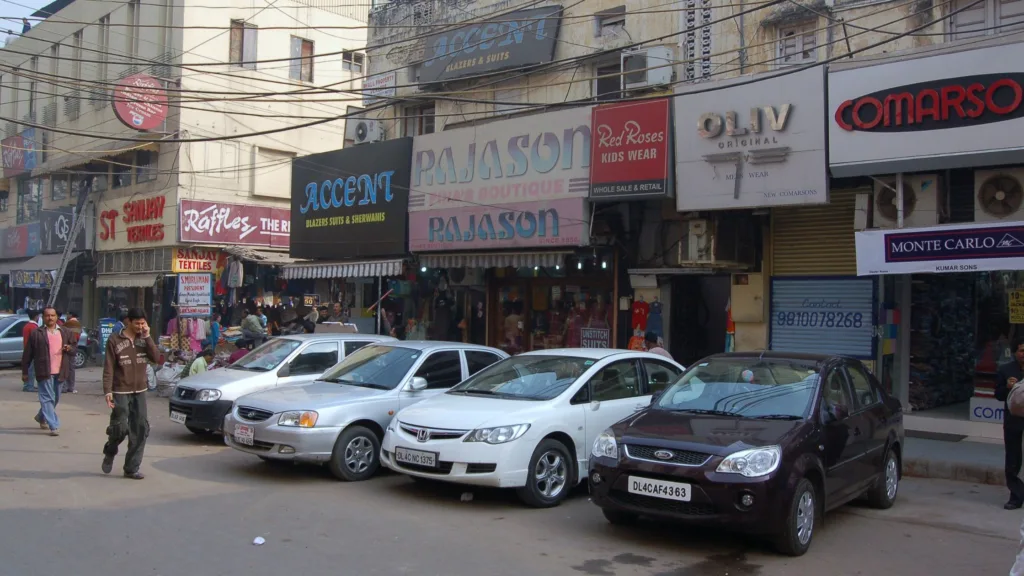
Famous Shops at Karol Bagh Delhi
Karol Bagh market is located in Central Delhi and is one of the biggest shopping streets in India. This market has a wide range of shops selling everything from traditional Indian fashion to modern clothing, electronics, jewelry, and home décor items.
Many famous brands have outlets in the Karol Bagh area, such as Nike, Reebok, Puma, and Levi’s.
It is also known for its eateries which offer a wide range of cuisines from North Indian to Chinese. This market also has a number of street food stalls. These stalls provide inexpensive snacks and quick meals, such as pav bhaji, chhole bhature, dosa, and chaat.
Karol Bagh is one of the best places to go shopping in Delhi. It offers a great variety of products at reasonable prices. The market also has its own market complex, which includes many department stores, supermarkets, fast food joints, banks, and ATMs.
It is a great place to explore and experience the hustle and bustle of Delhi. From traditional Indian wear to modern clothing, Karol Bagh market has something for everyone. It is undoubtedly one of the best shopping places in Delhi and should not be missed if you are visiting the city.
The Bottom Line
Karol Bagh’s market is truly one of a kind. With its vibrant atmosphere and wide selection of goods, it offers something for everyone.
From seasoned shoppers to curious tourists. Whether you’re looking for traditional Indian clothing or just curious about what this bustling marketplace has to offer, there’s no better way to experience India than with a visit to Karol Bagh market.
So make sure to visit this market and see why it has been described as “the best of both worlds, a vibrant bazaar where modern meets traditional!”

